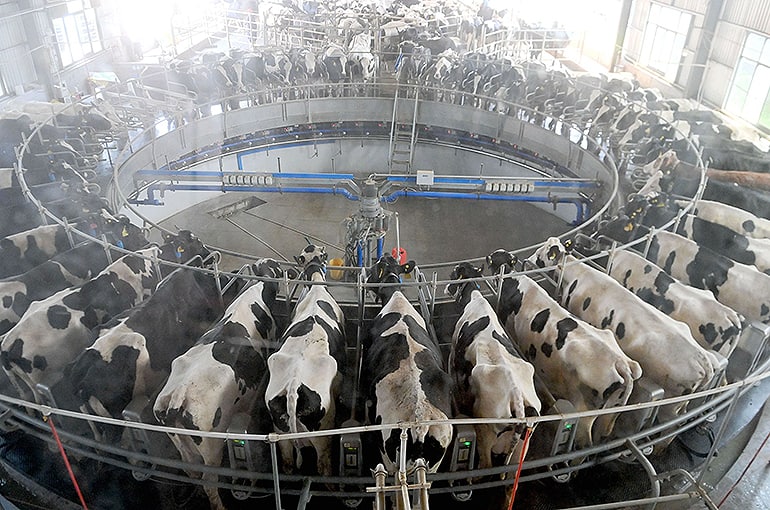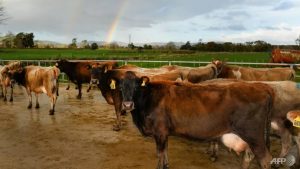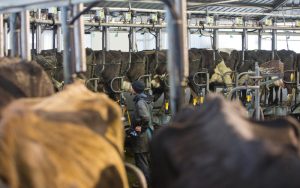
Lianhai Cow Cooperative is closing down, the dairy farm in Zhaozhou county, northeastern Heilongjiang province said recently. It can no longer make ends meet as the price of milk continues to drop yet the cost of feeding its cattle has risen substantially. The firm is selling all its 500 cows to slaughterhouses at a price of CNY22 (USD3.10) per kilogram.
“Milk is only fetching CNY2 (USD0.28) per kilogram these days, far below the cost to produce it,” a member of the co-op’s staff surnamed Yu told Yicai Global. The farm produces 12 to 13 metric tons of fresh milk a day and has been selling it below cost price rather than dumping it.
The co-op has even been forced to break a seven-year contract with a long-term client, as it was running up serious losses, Yu said. Times have changed as before the milk business was very lucrative.
The price of soybean meal, a major component of animal fodder, jumped 45.5 percent at the end of last year from a year ago to CNY5,370 (USD762) per metric ton. Now it is around CNY4,500 per metric ton. Feed accounts for between 65 percent and 70 percent of the total costs of dairy farming.
Only the biggest can survive. It costs large ranches with no debts around CNY3.80 (USD0.50) to produce one kilogram of milk, said Song Huiting, chair of Jiangsu Jiahui Biotechnology. Given the current price of milk, only the top 20 percent to 30 percent of dairy farms that have high production volumes are able to stay afloat.
“Even cows are not selling well,” Zhang Jing, a dairy farmer in northern Hebei province, told Yicai Global. When milk prices were high, the price of a dairy cow was more than CNY30,000 (USD4,253), but this has now fallen as low as CNY7,000. So most cows are destined for the slaughterhouse.
When there is an oversupply of milk, dairy firms tend to turn raw milk into milk powder to reduce losses. In February, dairy farms converted an average of 10,800 metric tons of fresh milk into milk power a day, a jump of 13 percent from December last year, and accounting for 17 percent of all milk produced that month.
Editor: Kim Taylor





















